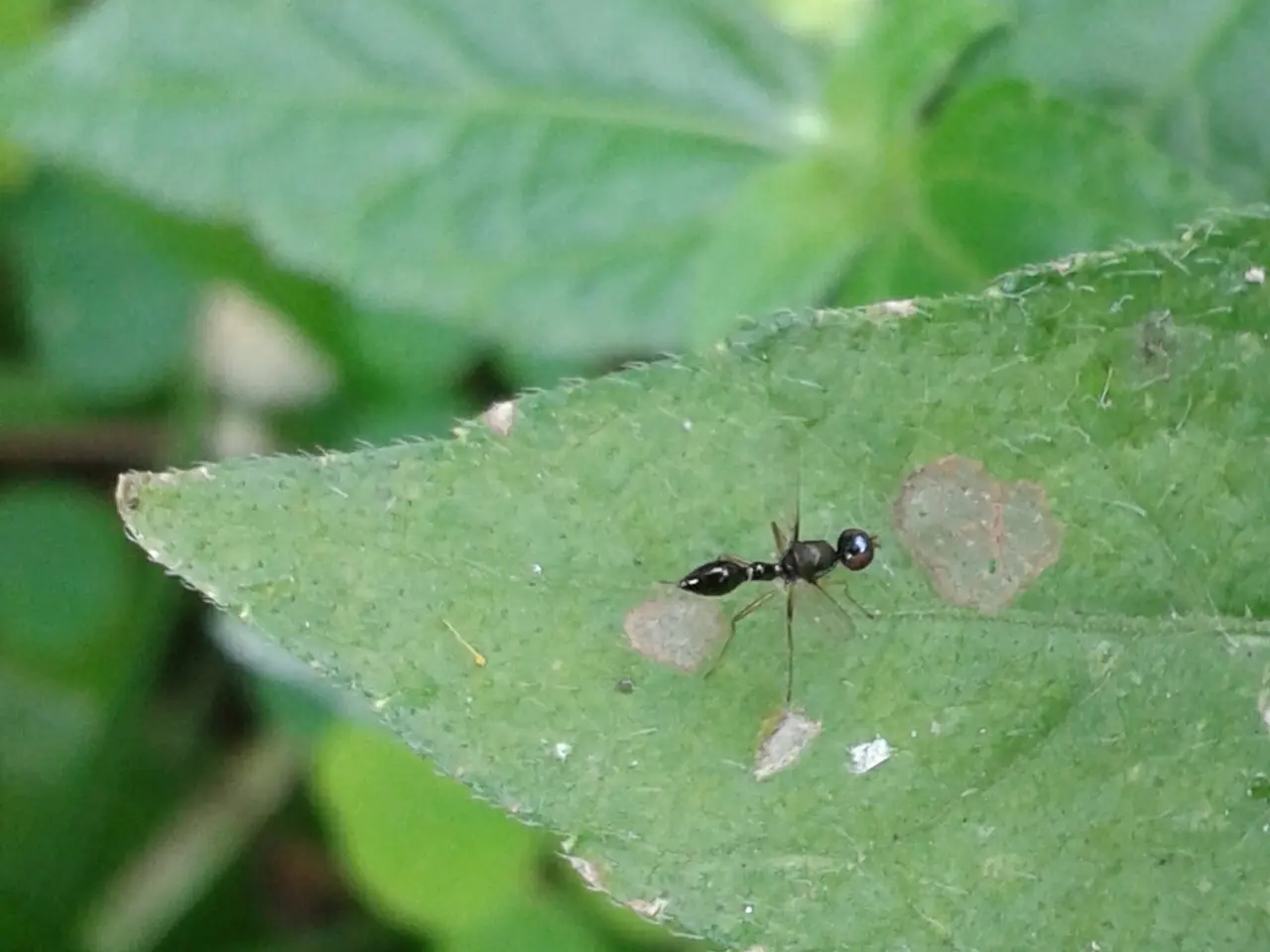Ant-expedition in Bad Kissingen: from firearm to forest floor
In the picturesque town of Bad Kissingen, Germany, two local ant guardians, Martina Faber and Anja Vorndran, have taken on a unique responsibility - the preservation and relocation of forest ant colonies. The duo, who have completed their comprehensive training at the Bavarian Ant Protection Station e.V., recently undertook the relocation of a colony from a construction site to a new home on a plot of land owned by the Nature Conservation Association.
The relocation process was carefully planned and executed, ensuring the safety and well-being of the ants. The colony, living in a rusty metal barrel filled with window glass panes, was thriving despite its unconventional habitat. The ants were carefully separated from the glass, and the glass was disposed of by the farmer, while the ants were transported in large plastic containers via a hanger to their new home.
The new home, surrounded by fruit trees and forest, provides an ideal environment for the ants, offering sufficient sunlight, food, and protection. This is crucial for the growth and prosperity of the colony, which consists of several hundred thousand female workers and a queen.
Forest ants, particularly the hairy-footed ant (Formica polyctena), play a significant role in nature conservation. They control pests, loosen soil, and aid in plant dispersal. Moreover, they are an important food source and delicacy for birds. Insects, in general, are considered important for the ecosystem, with ants often referred to as the "police of the forest."
However, relocating insects, including ants, is not a task to be taken lightly. It requires a species protection permit, which is necessary for ant relocation. The best time for ant relocation is in April and May. Insects may not be relocated or killed independently; professionals must be involved to ensure the process is carried out correctly.
Insects are protected under species protection law, and improper removal or destruction of a nest can result in a high fine. This is to prevent the disruption of local ecosystems or the spread of invasive species, such as the Asian needle ant, which can have detrimental effects on biodiversity.
Relocating forest ant colonies is a complex process that involves understanding their social structure, carefully handling the queen and workers, and ensuring the integrity of the colony environment. It requires a deep understanding of ant biology and behaviour, handling techniques to avoid queen injury, knowledge of species-specific habitat needs, and biosecurity measures to prevent introducing invasive species or pathogens.
For those interested in becoming ant guardians, training is essential. Proper training includes understanding ant biology and behavior, handling techniques to avoid queen injury, knowledge of species-specific habitat needs, and biosecurity measures to prevent introducing invasive species or pathogens. Interested individuals can find course dates for ant guardian training at www.antlovers.de.
Consulting local wildlife or environmental authorities is a necessary first step before undertaking such relocations. It ensures that all necessary permits are obtained and that the process is carried out in a manner that is both legal and beneficial to the ecosystem.
[1] [Ant Biology and Behaviour](https://www.ant-wiki.org/wiki/Ant_biology_and_behaviour) [2] [Ant Relocation](https://www.ant-wiki.org/wiki/Ant_relocation) [3] [Ant Conservation](https://www.ant-wiki.org/wiki/Ant_conservation)
The relocation and preservation of forest ant colonies can contribute significantly to the environmental-science field, as forest ants play critical roles in controlling pests, loosening soil, and aiding in plant dispersal. To ensure the well-being of these ants, home-and-garden enthusiasts should follow scientific methods and protocols when relocating colonies, as it requires a comprehensive understanding of ant biology and behavior. Proper training, professional involvement, and obtaining species protection permits are essential steps for successful ant relocation, which can be found in various resources, such as ant-wiki.org.




